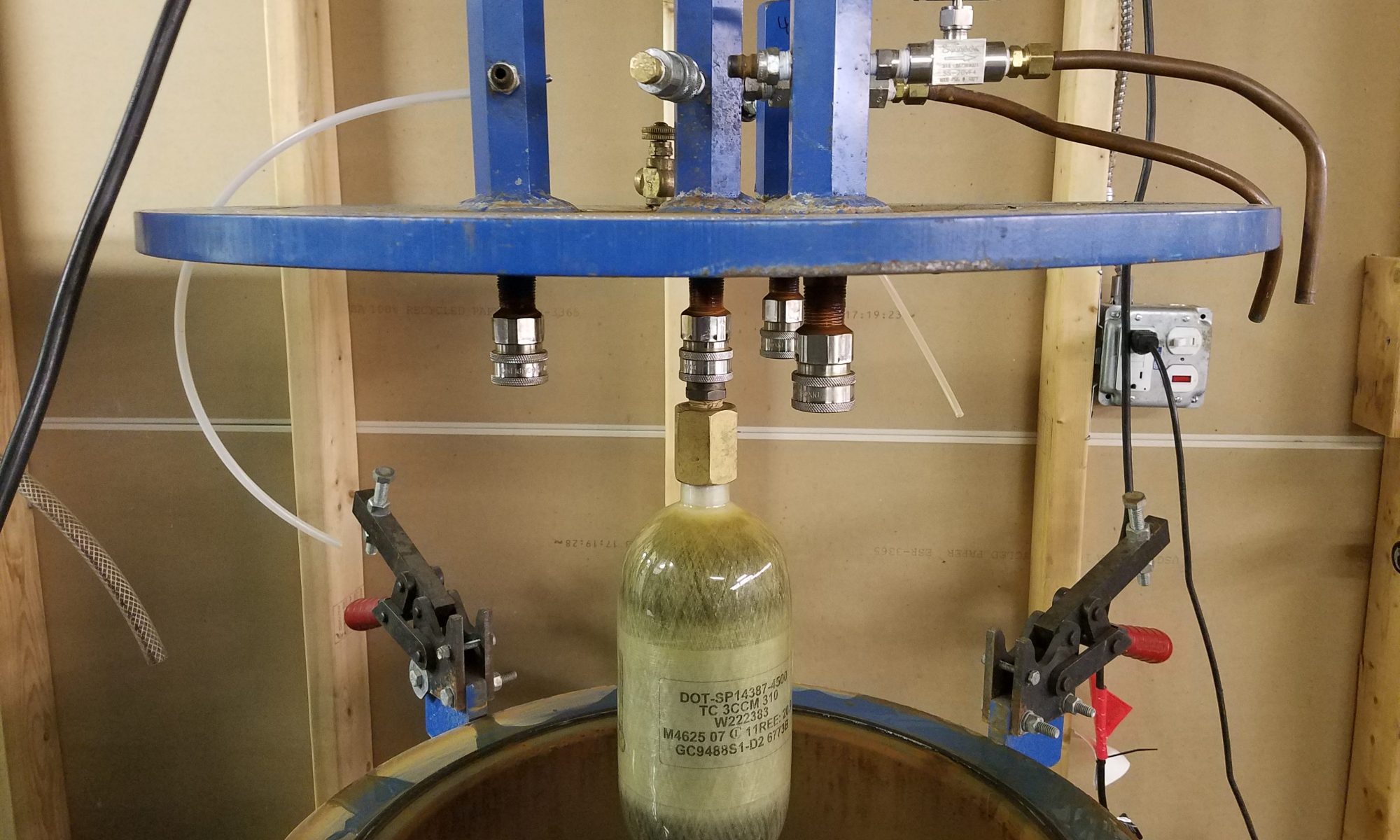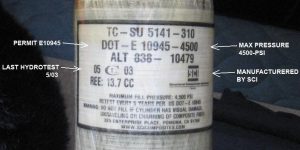There is some confusion between a SCUBA visual exam, a visual inspection, and a visual eddy current test. All tank filling personnel are required to conduct a visual inspection of the outside of the tank to make sure there is no visible damage that could compromise the integrity of the tank. We’re looking for dents, dings, and gouges. The cost of the visual inspection is including in the cost to fill.
A SCUBA visual exam is done on breathing air tanks periodically. The tank is emptied, and the valve is removed so they can look inside the tank for any corrosion, mold, or debris that could have accumulated in the tank and get into your regulator or lungs. Most SCUBA shops charge $10-$15 for a visual. If you use your SCUBA tank for an airgun or paintball marker and never for breathing, you don’t need a periodic SCUBA visual exam. We do a complete Visual exam at the time of hydro testing.
A visual eddy current test checks tanks for sustained load cracking around the valve. We use a probe that has an electrical current and creates a magnetic field which can highlight cracks in the aluminum. Cracks are bad for everyone. Aluminum tanks need to have some elasticity so they can expand as they are filled. A crack is a clear indication that the aluminum won’t expand at that point, and the crack will widen. Aluminum tanks made prior to July 1990 could have been made with 6351 aluminum alloy. Some manufacturers started switching over to 6061 aluminum alloy as early as 1988. Most fill personnel require anything made prior to 7/90 to have a visual eddy inspection at the time of the hydro test.
It’s important here to note that a if a tank doesn’t pass a visual inspection or a visual eddy current test it can’t be filled. But tanks that don’t pass a SCUBA visual inspection can usually just be cleaned out and filled up. I personally think beverage tanks should get a yearly SCUBA style internal inspection. With home kegerator systems becoming increasing popular there runs a risk of bacteria growing in the tank and tainting the beverages. For example, if there is a leak in the airline causing the tank to empty while the keg is still pressurized, beverages can back fill into the tank and start growing bacteria at a rapid pace. if you have a beverage cylinder and have seen fluid in the lines between the keg and the tank ask for an internal visual inspection. If your lines aren’t transparent, think about changing out a section to one that is.
I hope this answers some questions and keeps some people safe. Please feel free to contact us with any questions.
Nick

